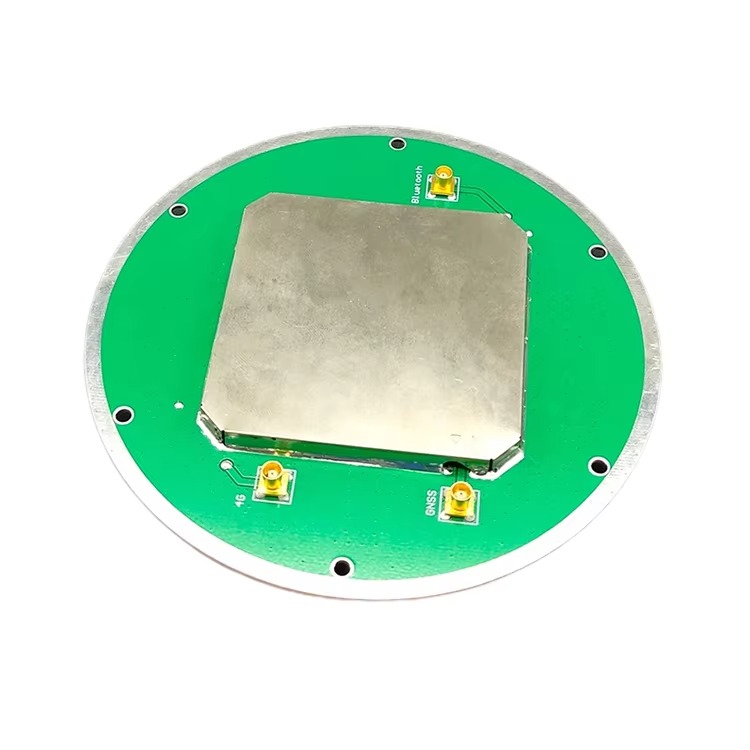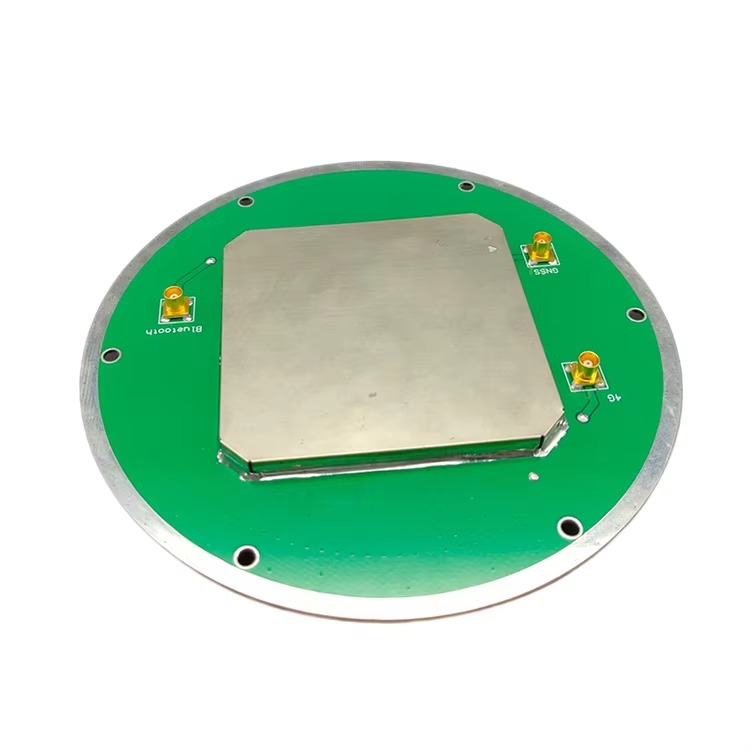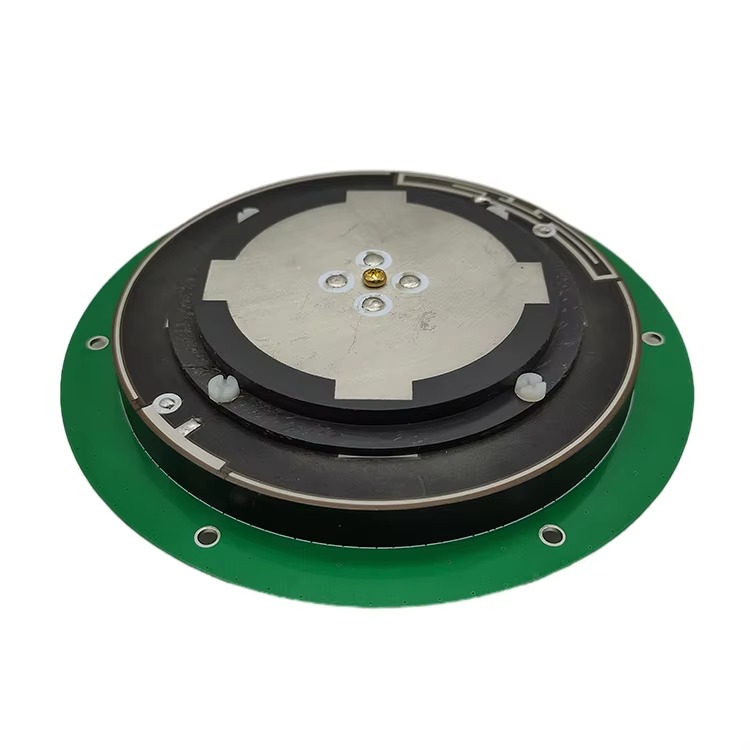5.1 Current Applications
5.1.1 Precision Agriculture
In precision agriculture, high - gain CORS base station antennas play a vital role. Farmers use GNSS - based systems to precisely manage their fields. With the help of high - gain antennas, they can achieve centimeter - level accuracy in positioning. This allows for precise application of fertilizers, pesticides, and seeds.
For example, variable - rate technology can be used to apply fertilizers only where they are needed in the field, based on the soil nutrient levels and crop growth patterns. The high - accuracy positioning provided by CORS systems with high - gain antennas enables farmers to accurately map the areas that require different levels of inputs, reducing waste and improving crop yields while minimizing environmental impact. In addition, high - gain antennas help in the accurate guidance of agricultural machinery, such as tractors and harvesters, ensuring efficient operation and reducing the risk of overlapping or missing areas during field work.
5.1.2 Autonomous Driving
Autonomous vehicles rely on highly accurate positioning data to navigate safely. High - gain CORS base station antennas are an essential part of the infrastructure that supports this. These antennas provide the accurate positioning information required for autonomous vehicles to determine their exact location on the road.
The centimeter - level accuracy provided by CORS systems with high - gain antennas is crucial for tasks such as lane - keeping, intersection navigation, and obstacle avoidance. For example, when an autonomous vehicle approaches an intersection, it needs to know its exact position relative to the traffic lights, stop signs, and other vehicles. The high - gain CORS base station antennas, in combination with other sensors such as lidar and cameras, enable the vehicle to make precise decisions and navigate the intersection safely. As the development of autonomous driving technology continues, the demand for reliable and accurate CORS - based positioning systems with high - gain antennas is expected to increase significantly.
5.1.3 High - Precision Mapping and Surveying
High - precision mapping and surveying applications require extremely accurate positioning data. High - gain CORS base station antennas are widely used in these fields to achieve the required level of accuracy. In topographic mapping, for example, surveyors use GNSS receivers connected to high - gain antennas to measure the elevation and coordinates of points on the Earth's surface with centimeter - level precision.
This data is then used to create detailed topographic maps that are used in urban planning, construction, and environmental management. For instance, in the construction of a new highway, surveyors use high - gain CORS base station antennas to accurately measure the terrain along the proposed route. This data helps engineers design the highway to avoid steep slopes, wetlands, and other obstacles, reducing construction costs and environmental impact.
In addition to topographic mapping, high - gain CORS base station antennas are also used in cadastral surveying. Cadastral surveying involves determining the boundaries of land parcels, which is essential for property ownership and land management. The high - accuracy positioning provided by these antennas ensures that the boundary measurements are precise and legally valid, preventing disputes between property owners.
5.1.4 Infrastructure Monitoring
Infrastructure monitoring is another important application of high - gain CORS base station antennas. Critical infrastructure such as bridges, dams, and tall buildings can experience small displacements over time due to factors such as temperature changes, structural loading, and geological activities. These displacements, if not detected and monitored, can lead to serious safety hazards.
High - gain CORS base station antennas, when combined with GNSS receivers and monitoring software, can measure these small displacements with millimeter - level accuracy. For example, in the monitoring of a bridge, a CORS station equipped with a high - gain antenna is installed near the bridge. The antenna continuously receives satellite signals, and the monitoring software calculates the position of the bridge's key points over time. By comparing the positions measured at different times, engineers can detect any displacements and assess the structural health of the bridge. If significant displacements are detected, appropriate maintenance or repair measures can be taken to ensure the safety of the bridge.
5.2 Future Trends
5.2.1 Integration with 5G Technology
The integration of high - gain CORS base station antennas with 5G technology is expected to be a major future trend. 5G technology offers high data rates, low latency, and massive connectivity, which can enhance the performance of CORS systems.
By integrating with 5G, CORS systems can transmit positioning data more quickly and reliably. This is particularly important for applications such as autonomous driving, where real - time positioning data is crucial for the safe operation of vehicles. For example, an autonomous vehicle needs to receive up - to - date positioning information to make split - second decisions, such as avoiding obstacles or changing lanes. With 5G connectivity, the CORS system can transmit this data to the vehicle with minimal latency, ensuring that the vehicle has the most current information.
In addition, 5G technology can enable the deployment of more CORS stations in remote areas. 5G's wide coverage and ability to connect multiple devices simultaneously make it easier to set up and operate CORS stations in areas where traditional communication infrastructure is limited. This will help to expand the coverage of CORS networks, providing more accurate positioning services to a wider range of users.
5.2.2 Miniaturization and Portability
Another future trend in high - gain CORS base station antennas is miniaturization and portability. Currently, many high - gain CORS base station antennas are large and heavy, making them difficult to install and transport. However, with advancements in materials science and antenna design, it is expected that these antennas will become smaller and more lightweight in the future.
Miniaturized high - gain CORS base station antennas will have a wide range of applications. For example, in emergency response situations, such as natural disasters, portable CORS stations equipped with miniaturized antennas can be quickly deployed to provide accurate positioning data. This data can help emergency responders navigate the disaster area, locate survivors, and coordinate rescue efforts.
In addition, miniaturized antennas can be integrated into small - scale devices, such as drones. Drones equipped with high - gain CORS antennas can be used for a variety of applications, including aerial mapping, crop monitoring, and infrastructure inspection. The high - accuracy positioning provided by the antennas will enable the drones to perform these tasks with greater precision and efficiency.
5.2.3 Artificial Intelligence (AI) - Assisted Optimization
The use of artificial intelligence (AI) in the optimization of high - gain CORS base station antennas is also an emerging trend. AI algorithms can be used to analyze large amounts of data related to the antenna's performance, such as signal strength, phase center stability, and multipath interference. Based on this analysis, the AI algorithms can automatically adjust the antenna's parameters, such as the phase and amplitude of the signals fed to the antenna elements, to optimize its performance.
For example, if the AI algorithm detects that the antenna is experiencing high levels of multipath interference in a particular direction, it can adjust the phase of the signals in the corresponding antenna elements to reduce the interference. This real - time optimization can significantly improve the antenna's performance, especially in dynamic environments where the sources of interference are constantly changing.
In addition, AI can be used in the design of high - gain CORS base station antennas. AI - based design tools can generate multiple antenna designs based on specific requirements, such as gain, bandwidth, and size. These tools can then evaluate the performance of each design using simulation software, selecting the optimal design that meets the user's needs. This will significantly reduce the time and cost associated with antenna design, accelerating the development of new and improved high - gain CORS base station antennas.
Conclusion
High - gain CORS base station antennas are indispensable components in modern GNSS - based positioning systems, playing a crucial role in ensuring the accuracy, reliability, and coverage of these systems. Throughout this paper, we have explored various aspects of high - gain CORS base station antennas, including their overview, design and construction, working principles, advantages and challenges, applications, and future trends.
In the overview section, we highlighted the importance of CORS systems in geodetic surveying and positioning, and the critical role that high - gain antennas play in receiving weak satellite signals. We also discussed the growing demand for these antennas driven by the expansion of applications such as precision agriculture, autonomous driving, and high - precision mapping.
The design and construction section delved into the details of antenna element design, array configuration, and mechanical and environmental considerations. We explained how the use of patch antenna elements, planar array configurations, and corporate feeding networks contributes to achieving high gain. We also emphasized the importance of using durable materials and incorporating features such as lightning protection and radomes to ensure the antenna's reliability in outdoor environments.
In the working principles section, we described how high - gain CORS base station antennas receive satellite signals, mitigate multipath interference using techniques such as choke rings and advanced signal processing algorithms, and maintain phase center stability through careful design and calibration. These principles are essential for understanding how the antennas provide accurate positioning data.
The advantages of high - gain CORS base station antennas, including enhanced signal strength and coverage, improved positioning accuracy, and reduced interference susceptibility, make them highly valuable in a wide range of applications. However, they also face challenges such as complex design and manufacturing, high costs, and environmental sensitivity. Addressing these challenges will be crucial for the widespread adoption and further development of these antennas.
The current applications of high - gain CORS base station antennas, such as precision agriculture, autonomous driving, high - precision mapping and surveying, and infrastructure monitoring, demonstrate their versatility and importance in various fields. Looking to the future, the integration with 5G technology, miniaturization and portability, and AI - assisted optimization are expected to drive the continued evolution of these antennas, opening up new possibilities for their application.
In conclusion, high - gain CORS base station antennas have made significant contributions to the advancement of GNSS technology and will continue to play a key role in the development of new and innovative applications. As technology continues to progress, we can expect to see further improvements in the performance, functionality, and affordability of these antennas, making them even more essential in the world of high - precision positioning.




































































 Language
Language
 En
En Cn
Cn Korean
Korean

 Home >
Home > 







 18665803017 (Macro)
18665803017 (Macro)













